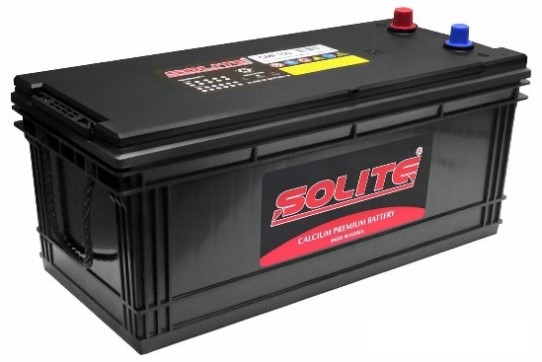Standby Generators’ batteries dying-out or blasting, why?
In the Arabian Gulf region majority of the buildings are equipped with standby generators for emergency situation in case of main power failure. These generators rarely get into actual operation, thanks to the reliable power supplies from local utility authorities. However, building owners and facility management companies in charge of building maintenance find the generators useful in case the building mains is going under maintenance for few hours. The generator usually would be powering the essential panels such as elevators, camera system, fire pumps, emergency exit lights .. etc. So, one is not to expect that all areas in the building would be powered by the generator.
The generators are started by DC 12 / 24 V lead acid batteries or Ni-Cadmium batteries. In this blog we will be elaborating more about the maintenance free batteries which are the new substitute of lead acid batteries. The maintenance-free batteries have a useful life of 4-6 months (especially in hot summer months in the gulf) if not maintained with proper re-charging intervals.
The heat and humidity play a vital role in shortening the life of the batteries, and although you could re-charge the batteries manually with battery charger, however, there is an automatic way for re-charging.
A battery charger draws AC current and converting and they are permanently connected to the batteries. The charger is usually fixed in the generator control panel or in separate panel. The charger automatically return to float mode when charging is complete. Once the battery is fully charged the chargers switch to Eco-Power to save energy (in Power Save Mode).
If the battery charger fails to function it could lead to overcharging which eventually hits the battery performance or even damages it. The reason is simple, overcharging causes the fluids to boil inside, and the battery becomes extremely hot. Thus, melting or swelling could be the issue in such a case.
Unlike conventional batteries, the maintenance-free batteries don’t require special attention while charging and even tackle the overcharging situation. One of the main disadvantages of a maintenance free battery is that it demands a lot of attention while charging.
Sometimes, you need to give them extra time for a full charge, as slow charging events often reduce the battery’s performance. Moreover, the plates often get heated more in the overcharging situation, impacting battery life.
Even though, apart from the usage time, the life of a maintenance free automotive battery also relies upon the conditions like the temperature, charging current, or overcharge situation. It is seen that high temperatures eventually speed up the aging process of the battery and affect performance.
The idea temperature for maintenance-free batteries is between 20 °C and 25 °C. Impact of Extreme Temperatures on Batteries. When it comes to battery life, the temperature is one of the most significant factors that can affect its overall performance and longevity. Extreme temperatures, both hot and cold, can have a negative impact on the performance and lifespan of batteries.
High temperatures can cause the battery to degrade faster, leading to a shorter lifespan. The chemical reactions inside the battery speed up as the temperature of the battery rises. This increased activity can cause the battery to lose its charge more quickly, reducing its overall capacity. When it comes to battery performance, temperature plays a significant role in both charging and discharging processes.
Batteries should be charged within their recommended temperature range to ensure optimal charging. Charging at high temperatures can lead to reduced battery life, while charging at low temperatures can result in incomplete charging. The optimal charging temperature range varies depending on the type of battery chemistry. For example, lead-acid batteries should be charged between 10°C and 26°C,
In conclusion, batteries blast due to:
- Thermal leaks where the electric currents can cause a battery to overheat, catch fire, and explode.
- Short circuiting: this occurs if the separator fails, the anode & cathode touch.
- Vibrations or falls: Misplaced internal pole pieces can cause severe shorting and explosion.
